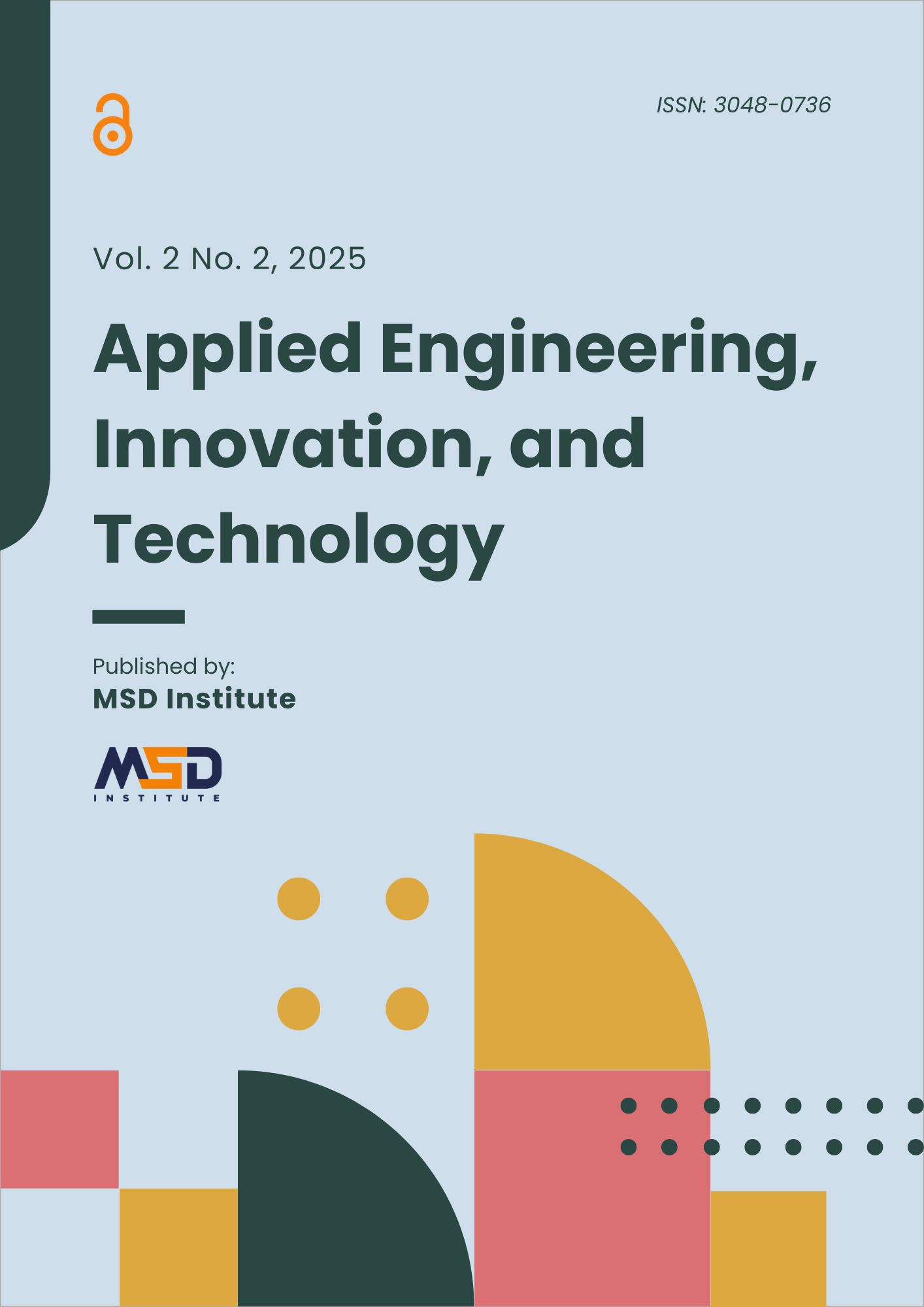Analysis of Duty Cycle, Inductance, and Capacitance Variations on Buck Converter Performance Using PSIM Software
Published 05-10-2025
Keywords
- Buck Converter,
- Duty Cycle,
- Inductance,
- Capacitance,
- Ripple Voltage
- PSIM,
- DC-DC Converter ...More
Copyright (c) 2025 Isra' Nuur Darmawan, Kholistianingsih Kholistianingsih, Slamet Fajar Budhi Nugroho, Nur Johara (Author)

This work is licensed under a Creative Commons Attribution 4.0 International License.
How to Cite
Abstract
This study investigates the influence of duty cycle, inductance, and capacitance variations on the performance of a buck converter through simulation using PSIM software. The research aims to quantify how these parameters affect output voltage and ripple, which are key factors in achieving efficient and stable DC–DC conversion for renewable energy applications. The converter was modeled with an input voltage of 48 V, an intended output voltage of 24 V, and a switching frequency of 20 kHz. Simulation results show that the output voltage increases linearly with the duty cycle. At a 50% duty cycle, the converter achieved an output voltage of 23.9 V, confirming accurate voltage regulation. Furthermore, ripple voltage was found to decrease significantly with higher inductance and capacitance values, reaching a minimum of 0.1 V when L is 750 μH and C is 1,250 μF. These results demonstrate that optimizing LC parameters can substantially improve voltage stability and filtering efficiency. The findings provide practical design guidance for high-efficiency buck converters used in renewable energy and power electronic applications.
References
- N. Tayebi, A. A. Najafabadi, M. S. Naderi, A. Khorsandi, and S. H. Hosseinian, “Voltage Regulation in a DC Micrigrid with Renewable Energy Resources, Energy Storage Systems and Electric Vehicles Station using Hierarchical Control Method,” in 2023 5th International Conference on Optimizing Electrical Energy Consumption (OEEC), IEEE, Feb. 2023, pp. 35–39. doi: 10.1109/OEEC58272.2023.10135467.
- H.-H. Chou, H.-L. Chen, Y.-H. Fan, and S.-F. Wang, “Adaptive On-Time Control Buck Converter with a Novel Virtual Inductor Current Circuit,” Electronics (Basel), vol. 10, no. 17, p. 2143, Sep. 2021, doi: 10.3390/electronics10172143.
- P. A. Bustaman and T. Abuzairi, “Component Analysis of MOSFET in Synchronous Buck Converter Circuit Using LTspice Simulation,” in 2024 International Seminar on Intelligent Technology and Its Applications (ISITIA), IEEE, Jul. 2024, pp. 76–81. doi: 10.1109/ISITIA63062.2024.10668278.
- J.-S. Kim, J.-O. Yoon, and B.-D. Choi, “A High-Light-Load-Efficiency Low-Ripple-Voltage PFM Buck Converter for IoT Applications,” IEEE Trans Power Electron, vol. 37, no. 5, pp. 5763–5772, May 2022, doi: 10.1109/TPEL.2021.3131594.
- N. Hutagalung, B. W. Dionova, and D. Hendrawati, “Design and Simulation of Asynchronous Buck Converter using Fuzzy Logic Controller (FLC),” Eksergi, vol. 20, no. 02, pp. 29–36, May 2024, doi: 10.32497/eksergi.v20i02.5804.
- T. Jiang, S. Zhang, J. Xie, J. Fan, C. Yang, and X. Han, “A Coupled L-LC Filter for Interleaved Buck Converter Ripple Cancellation,” IEEE Trans Power Electron, vol. 39, no. 5, pp. 6028–6039, May 2024, doi: 10.1109/TPEL.2024.3365171.
- S. Quan and S. Yuan, “Closed-loop Simulation of Buck Converter Based on PSIM,” E3S Web of Conferences, vol. 256, p. 02021, May 2021, doi: 10.1051/e3sconf/202125602021.
- R. I. Putri, I. N. Syamsiana, M. Rifa’i, and F. Aditya, “Voltage control for variable speed wind turbine using buck converter based on PID controller,” IOP Conf Ser Mater Sci Eng, vol. 1073, no. 1, p. 012048, Feb. 2021, doi: 10.1088/1757-899X/1073/1/012048.
- B. Yodwong, D. Guilbert, W. Kaewmanee, M. Phattanasak, M. Hinaje, and G. Vitale, “Improved Sliding Mode-Based Controller of a High Voltage Ratio DC–DC Converter for Electrolyzers Supplied by Renewable Energy,” IEEE Transactions on Industrial Electronics, vol. 71, no. 8, pp. 8831–8840, Aug. 2024, doi: 10.1109/TIE.2023.3322009.
- H. S. Sridhar and K. Sakshith Devaiah, “Modelling and analysis of Voltage Mode control (VMC) of Buck Converter using P, PI, PID Controller,” in 2024 International Conference on Smart Systems for applications in Electrical Sciences (ICSSES), IEEE, May 2024, pp. 1–5. doi: 10.1109/ICSSES62373.2024.10561294.
- A. Srikakulam and S. Narayan J, “Application of Normalized Error PI Controller to Higher Order DC-DC Converters,” in 2024 2nd International Conference on Cyber Physical Systems, Power Electronics and Electric Vehicles (ICPEEV), IEEE, Sep. 2024, pp. 1–6. doi: 10.1109/ICPEEV63032.2024.10932070.
- X. Weng et al., “Comprehensive comparison and analysis of non‐inverting buck boost and conventional buck boost converters,” The Journal of Engineering, vol. 2019, no. 16, pp. 3030–3034, Mar. 2019, doi: 10.1049/joe.2018.8373.
- L. Tai, M. Lin, J. Wang, and C. Hou, “Synchronous Control Strategy with Input Voltage Feedforward for a Four-Switch Buck-Boost Converter Used in a Variable-Speed PMSG Energy Storage System,” Electronics (Basel), vol. 10, no. 19, p. 2375, Sep. 2021, doi: 10.3390/electronics10192375.
- M. P. Varghese, A. Manjunatha, and T. V. Snehaprabha, “The study on the effect of voltage ripple on multiphase buck converters with phase shedding control scheme for SCADA applications,” Bulletin of Electrical Engineering and Informatics, vol. 10, no. 4, pp. 1856–1863, Aug. 2021, doi: 10.11591/eei.v10i4.2798.
